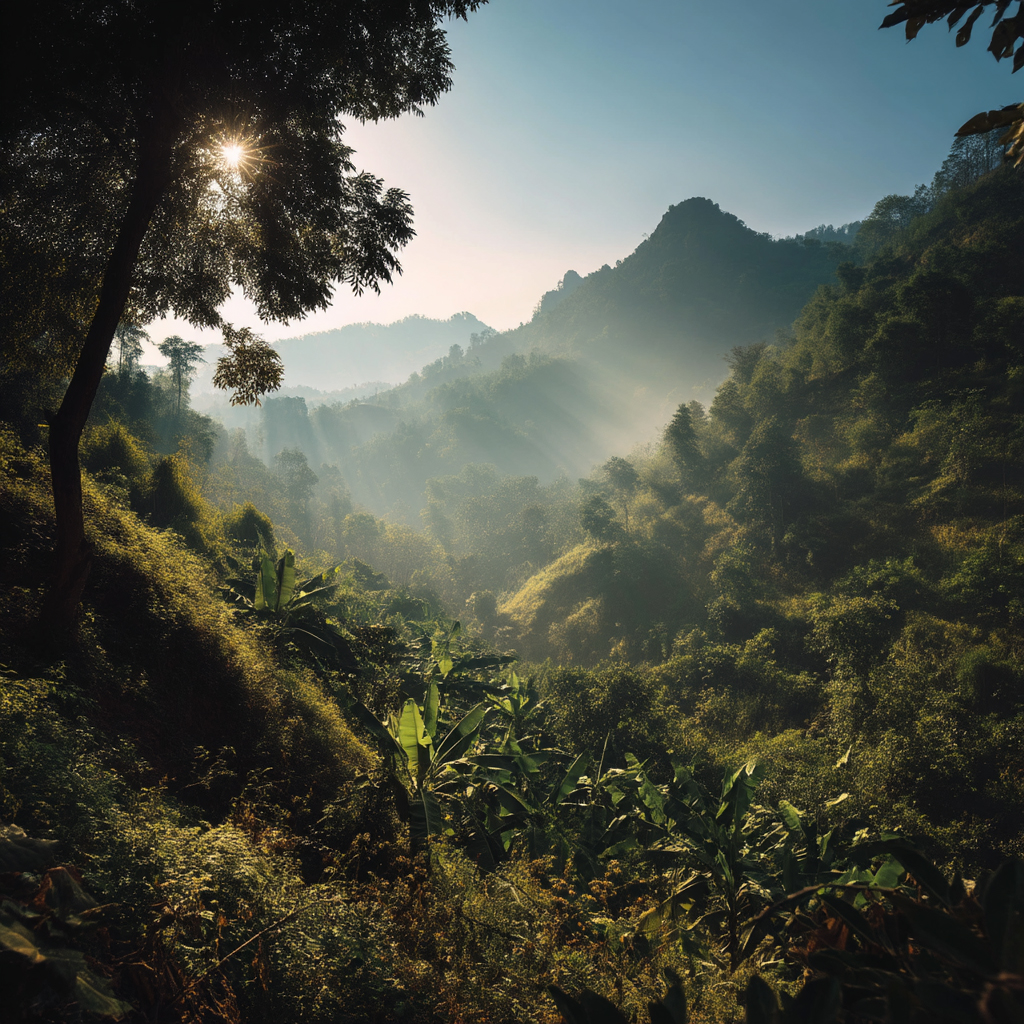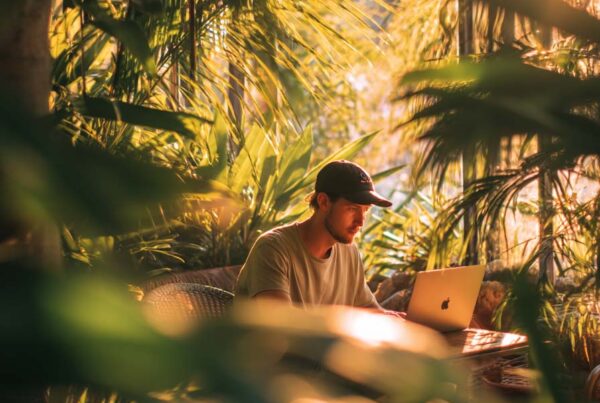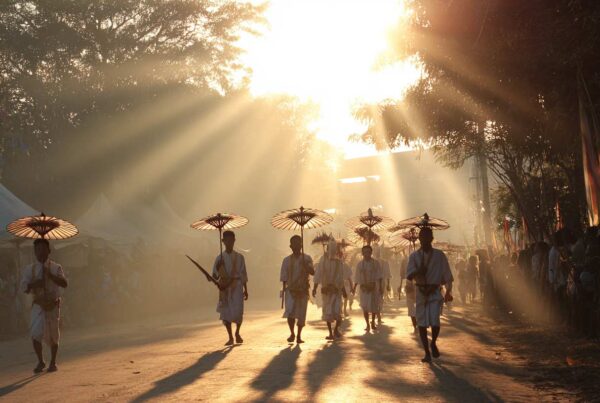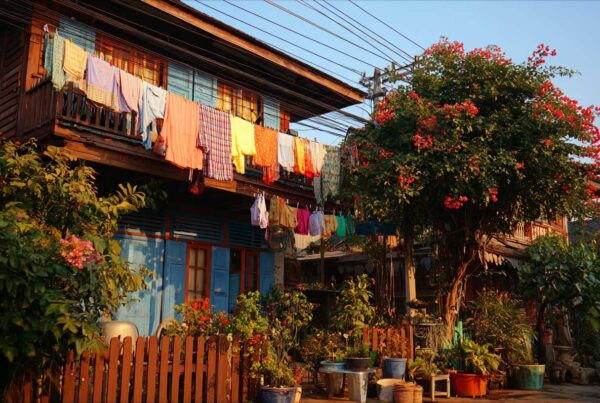At the western edge of Chiang Mai, where the city presses against the green rise of Doi Suthep mountain, a footpath quietly begins. Known as the Monk’s Trail, it leads upward through bamboo groves, mossy forest, and past hidden shrines, eventually arriving at one of the most important temples in Northern Thailand: Wat Phra That Doi Suthep.
The route is not remote, yet it feels worlds apart from the traffic and markets just minutes away. To walk the Monk’s Trail is to trace a path that weaves nature, spirituality, and exercise into one experience. It is at once a hike, a meditation, and a cultural journey, accessible enough for locals and visitors alike.
Starting the Day
Morning is the best time to begin. The trailhead lies just off Suthep Road, where a weathered wooden gate and a few simple signs mark the entrance. Nearby, the neighborhood is dotted with cafés and bakeries, making it easy to fuel up before setting off. A popular stop is Flour Flour Loaf, a small bakery known for sourdough breads and fresh coffee. Its terrace often serves as a gathering point for hikers preparing for the climb.
From the trailhead, the dirt track quickly leaves the city behind. Bamboo and teak close in overhead, filtering the morning sun into shifting shadows. The hum of traffic fades, replaced by birdsong and the rustle of leaves in the underbrush. What begins as an urban morning transforms within minutes into a forest ascent.
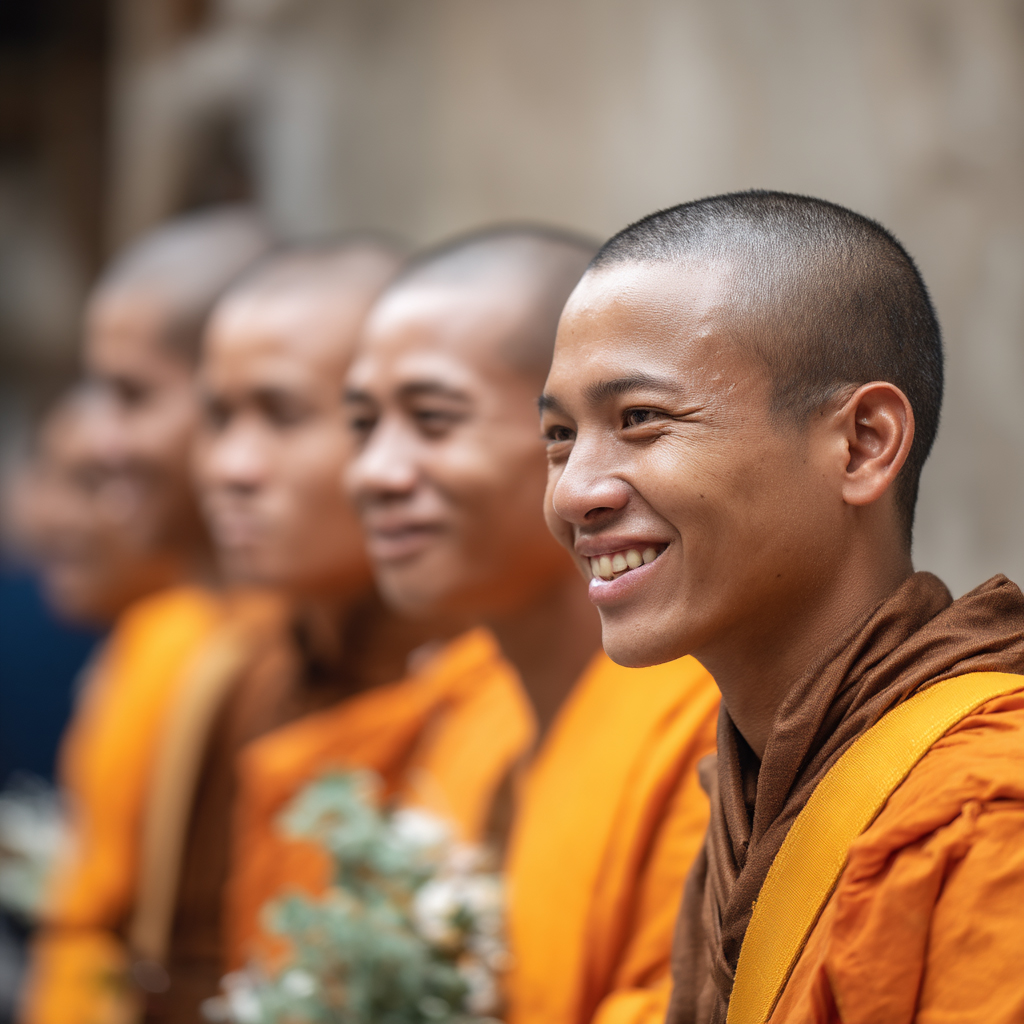
Traces of the Monks
The trail’s name comes from its long association with monks who once walked this route between the city and the mountain temples. Remnants of that tradition remain visible in strips of orange robe tied around trees, marking both presence and reverence. These quiet signs remind hikers that the path is more than recreational. It is a corridor of devotion layered into the forest itself.
The first section is moderate, a steady incline over compact soil and occasional exposed roots. After about 40 minutes, the forest opens slightly and reveals the hidden sanctuary of Wat Pha Lat.
Wat Pha Lat: A Temple in the Forest
Wat Pha Lat feels unlike any other temple in Chiang Mai. Tucked into the greenery beside a stream and small cascade, it blends seamlessly with the forest. Moss and vines soften stone walls, while intricate carvings emerge from shaded corners. Small shrines and Buddha images line the pathways, their presence both humble and profound.
The atmosphere here is hushed. Water trickles across smooth rocks, birds flit between trees, and benches along the slope invite rest. For many hikers, Wat Pha Lat serves as a natural pause point, a place to drink water, catch breath, and reflect. Monks sometimes appear quietly, crossing bridges or disappearing into shaded halls. The sense of continuity between human devotion and natural surroundings makes this temple one of Chiang Mai’s most serene places.
The Climb Continues
Beyond Wat Pha Lat, the ascent grows steeper. Switchbacks tighten, and the trail narrows through denser forest. The air cools as elevation increases, and in wetter months the soil becomes slick with mud. Signs grow less frequent, but the path remains intuitive, shaped by years of footsteps.
At one point, the trail intersects the paved mountain road. For a short stretch, hikers follow the asphalt before re-entering the forest at a marked bend. This interruption underscores how urban infrastructure threads through even semi-wild spaces. Yet soon the road disappears, replaced again by silence and soil.
The final section demands the most effort. Elevation gain is steady, and the forest canopy occasionally parts to reveal glimpses of the valley below. On clear mornings, sunlight slants through in golden shafts. Wild orchids sometimes appear along the path, adding splashes of color to the green. Despite the challenge, the steady rhythm of climbing becomes meditative, a physical effort balanced by the tranquility of the surroundings.
Arrival at Wat Phra That Doi Suthep
Eventually, the trail emerges at the base of the final staircase leading to Wat Phra That Doi Suthep, Chiang Mai’s most iconic temple. The transition is abrupt. After hours in shaded forest, the scene shifts to paved lots, food stalls, and the murmur of crowds. From here, more than 300 steps rise between long naga serpent balustrades, their scaled bodies undulating the entire length of the staircase.
At the top, the temple complex unfolds in brilliant gold. The central chedi gleams under the sun, surrounded by concentric walkways, prayer bells, and statues. Pilgrims circle the chedi with offerings of flowers and incense, while visitors admire murals depicting Buddhist stories. The sound of bells ringing mixes with chants and camera shutters, a blend of devotion and tourism that defines the site today.
From the terrace, wide views stretch across Chiang Mai. The city grid lies far below, its streets and airport runway clearly visible on clear days. After the forested seclusion of the trail, this sweeping panorama underscores the scale of the journey.
The Descent
Choices await at the summit. Many hikers descend the same way they came, retracing steps past Wat Pha Lat and returning to Suthep Road. Others opt for red songthaew taxis that line the parking lot, offering a quick return to the city. The contrast is striking. Within 20 minutes, the quiet of the forest can give way to the clamor of traffic and markets.
Yet the effect of the hike lingers. Muscles carry the exertion, lungs recall the cool air, and memory holds the layered sequence of city street, bamboo forest, hidden temple, and golden chedi. The Monk’s Trail is less about distance than about transition, a gradual passage from urban to natural to sacred.
Practical Notes
- Time: The full hike from trailhead to temple typically takes two to three hours at a moderate pace. Wat Pha Lat lies at the natural halfway point.
- Conditions: The trail is accessible year-round, but mornings and the cooler months between November and February offer the most pleasant conditions. After rain, paths can be slippery.
- Preparation: Good shoes, water, and modest clothing are essential. Shoulders and knees must be covered to enter the temple respectfully.
- Navigation: The route is intuitive, though occasional signs and robe markers guide the way. The brief road section requires attention to rejoin the path.
- Experience: The hike blends exercise with cultural immersion, offering both natural beauty and a direct encounter with Lanna spiritual heritage.
More nature close to the city
Conclusion: A Path Between Worlds
The Monk’s Trail is not remote wilderness. It is a corridor hidden in plain sight, threading from neighborhood streets into forest and finally to one of Northern Thailand’s most revered sites. Its power lies in the way it compresses contrasts: from sourdough and coffee at a city bakery to moss-covered shrines in the jungle, from sweat and silence on a steep climb to the golden brilliance of a mountaintop chedi.
For those seeking to experience Chiang Mai in a way that connects body, landscape, and culture, few routes offer as much. The Monk’s Trail is a reminder that just beyond the city’s edge lies a path where every step leads deeper into history, nature, and reflection.
